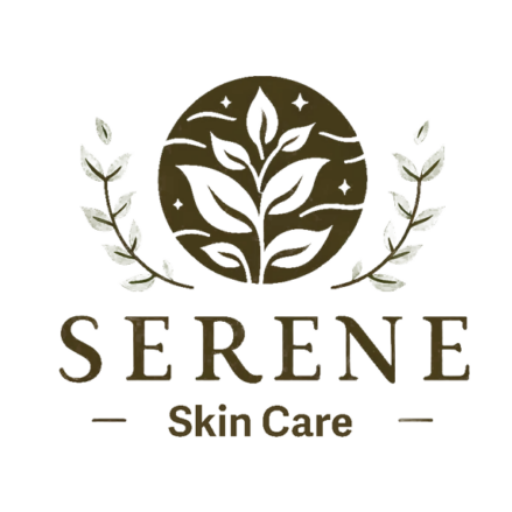In recent years, there has been a significant rise in the popularity of at-home skincare devices. With advancements in technology and the increasing demand for convenient and effective skincare solutions, these devices have quickly become a go-to choice for many individuals. From cleansing brushes to LED masks, these innovative tools offer a variety of benefits and allow people to take control of their skincare routines in the comfort of their own homes. In this article, we will explore the reasons behind the rise of at-home skincare devices and how they are revolutionizing the way we care for our skin.
Overview
What are At-Home Skincare Devices?
At-home skincare devices are portable electronic devices that are designed to provide various skincare treatments in the comfort of one’s own home. These devices often utilize advanced technologies such as LED light therapy, microcurrent stimulation, or derma rolling to target specific skin concerns. They aim to enhance the effectiveness of skincare routines and provide professional-level treatments without the need for regular visits to a dermatologist or esthetician.
Benefits of At-Home Skincare Devices
There are several benefits to using at-home skincare devices. First and foremost, they offer convenience by allowing individuals to perform professional treatments in the comfort of their own homes. This not only saves time and effort but also provides flexibility in adhering to a skincare routine. Additionally, at-home devices can provide cost savings in the long run compared to regular visits to a professional. They also allow individuals to have more control over their skincare treatments and take an active role in their own skin health.
Types of At-Home Skincare Devices
Cleansing Devices
Cleansing devices are designed to deep cleanse the skin by removing dirt, oil, and impurities more effectively than traditional manual methods. These devices use gentle vibrations or sonic technology to dislodge debris from the pores, leaving the skin feeling clean and refreshed.
Exfoliation Devices
Exfoliation devices help to remove dead skin cells and stimulate cell turnover, promoting a more youthful and radiant complexion. They often use rotating or vibrating brushes or derma abrasion to gently exfoliate the skin, revealing a smoother and brighter appearance.
LED Light Therapy Devices
LED light therapy devices utilize different wavelengths of light to target specific skin concerns. Red light stimulates collagen production and reduces the appearance of wrinkles, while blue light fights acne-causing bacteria. These devices can improve overall skin tone, reduce inflammation, and promote healing.
Microcurrent Devices
Microcurrent devices use low-level electrical currents to stimulate the facial muscles, resulting in a lifted and toned appearance. These gentle electrical pulses can help improve muscle firmness, tighten sagging skin, and reduce the appearance of fine lines and wrinkles.
Derma Rollers
Derma rollers consist of a handle with a roller covered in tiny needles. When rolled over the skin, these needles create micro-injuries, stimulating collagen production and enhancing the absorption of skincare products. Derma rollers can help improve skin texture, reduce scarring, and promote overall skin rejuvenation.
Nano-Infusion Devices
Nano-infusion devices are designed to enhance the absorption of skincare serums and treatments by creating microscopic channels in the skin. These devices use tiny silicone tips or needles to ensure the delivery of active ingredients deep into the skin layers, maximizing their effectiveness.
Key Features
Portability
One of the key features of at-home skincare devices is their portability. They are designed to be compact and lightweight, allowing individuals to easily take them on-the-go or use them in the convenience of their own homes.
User-Friendly Interface
At-home skincare devices often come with a user-friendly interface that is easy to navigate and understand. Clear instructions and intuitive controls make it simple for individuals to operate the devices and perform their targeted skincare treatments without any professional assistance.
Customizable Settings
Many at-home skincare devices offer customizable settings to cater to individual needs and preferences. These settings may include adjustable intensity levels or treatment durations, allowing users to personalize their skincare routines based on their skin type, concerns, and desired outcomes.
Safety Features
Safety is of utmost importance when using at-home skincare devices. These devices often come equipped with safety features such as built-in timers, automatic shut-offs, or sensors that ensure proper usage and prevent any harm or overuse of the device.
Effectiveness of At-Home Skincare Devices
Clinical Studies and Research
Numerous clinical studies and research have been conducted to evaluate the effectiveness of at-home skincare devices. These studies have shown promising results, indicating that these devices can deliver visible improvements in skin texture, tone, and overall complexion. However, it is important to note that individual results may vary, and consistency in usage is crucial to achieve optimal results.
Customer Reviews and Testimonials
In addition to clinical studies, customer reviews and testimonials play a significant role in assessing the effectiveness of at-home skincare devices. Many individuals have reported positive experiences, describing improvements in their skin’s appearance, reduction of fine lines and wrinkles, and enhanced overall radiance. It is advisable to research and read reviews from trusted sources before making a purchasing decision.
Cost Comparison
At-Home Skincare Devices vs Professional Treatments
When comparing the cost of at-home skincare devices to professional treatments, it becomes evident that at-home devices offer significant cost savings in the long run. While professional treatments may initially seem less expensive, the need for repeated visits and maintenance treatments can quickly add up. At-home devices provide a more affordable alternative without compromising on quality or results.
Popular Brands and Products
Brand A: Product 1, Product 2, Product 3
Brand A offers a range of at-home skincare devices that have gained popularity for their effectiveness and user-friendly features. Product 1 is a cleansing device that deeply cleanses the skin, while Product 2 is an LED light therapy device that targets multiple skin concerns. Product 3 is a microcurrent device that helps to lift and tone the facial muscles.
Brand B: Product 1, Product 2, Product 3
Brand B is known for its innovative skincare devices that are designed to address specific skin concerns. Product 1 is an exfoliation device that gently removes dead skin cells, Product 2 is a derma roller that promotes collagen production, and Product 3 is a nano-infusion device that enhances the absorption of skincare serums.
Brand C: Product 1, Product 2, Product 3
Brand C offers a range of at-home skincare devices that have received positive reviews for their effectiveness and reliability. Product 1 is an LED light therapy device with customizable settings, Product 2 is a cleansing device with portable design, and Product 3 is a microcurrent device that provides visible skin tightening results.
Guidelines for Choosing At-Home Skincare Devices
Skin Type and Concerns
When choosing an at-home skincare device, it is important to consider your specific skin type and concerns. Different devices target different issues, so selecting one that aligns with your needs will yield the best results. For example, if you have acne-prone skin, an LED light therapy device with blue light functionality may be beneficial.
Device Certifications and Approvals
Ensure that the at-home skincare device you choose has the necessary certifications and approvals from reputable authorities. These certifications indicate that the device has undergone safety testing and meets the required standards for consumer use.
Customer Reviews
Reading customer reviews from trusted sources can provide valuable insights into the performance and effectiveness of at-home skincare devices. Look for reviews from individuals with similar skin concerns and consider their experiences before making a purchase.
Warranty and Return Policies
Check for warranty and return policies when purchasing an at-home skincare device. A warranty ensures that you are protected against any manufacturing defects, while a favorable return policy allows you to return the device if it does not meet your expectations.
Price Range
Consider your budget when selecting an at-home skincare device. While cost is an important factor, it should not be the sole determining factor. It is advisable to invest in a device that offers the desired features and is of high quality, as this will provide better long-term value.
Tips for Using At-Home Skincare Devices
Consulting a Dermatologist or Esthetician
Before incorporating an at-home skincare device into your routine, it is recommended to consult with a dermatologist or esthetician. They can assess your skin and provide guidance on the best device for your individual needs and offer insights on how to integrate it into your skincare regimen.
Following Instructions
Always carefully read and follow the instructions provided with the at-home skincare device. Each device may have specific guidelines on usage, frequency, and duration to ensure optimal results and prevent any potential side effects.
Maintaining Device Cleanliness
Keeping your at-home skincare device clean is essential to maintain its effectiveness and prevent the growth of bacteria. Follow the manufacturer’s instructions on how to clean and disinfect the device, and ensure proper storage to prolong its lifespan.
Avoiding Overuse
It is important to follow the recommended usage guidelines and avoid overusing the device. Excessive or prolonged use can irritate the skin and lead to adverse reactions. Consistency is key, but moderation is equally important.
Monitoring Skin Reactions
Pay attention to any skin reactions or changes after using an at-home skincare device. If you experience redness, irritation, or any other adverse effects, discontinue use and consult a dermatologist. Monitoring your skin’s reactions will help you adjust your skincare routine and device usage accordingly.
Potential Risks and Side Effects
Skin Irritation or Allergic Reactions
While at-home skincare devices are generally safe for use, there is a risk of skin irritation or allergic reactions, particularly if the device is not used correctly or if an individual has sensitive skin. It is important to perform patch tests, follow instructions, and gradually increase usage to minimize the risk of adverse reactions.
Incorrect Usage or Device Malfunction
Incorrect usage of at-home skincare devices, such as using them on broken or irritated skin, can lead to unwanted side effects. Additionally, device malfunction or using devices that are not certified can pose safety risks. It is crucial to use the device as directed and ensure its proper functionality and certifications.
Adverse Reactions to Active Ingredients
At-home skincare devices often work in conjunction with serums or treatments that contain active ingredients. In rare cases, individuals may have adverse reactions to these ingredients, such as redness, itching, or dryness. It is important to review the ingredients in the products you use and discontinue their use if any adverse reactions occur.
Conclusion
At-home skincare devices have become increasingly popular due to their convenience, effectiveness, and cost savings. With a wide range of devices available on the market, individuals can cater to their specific skin concerns and achieve professional-like results from the comfort of their own homes. By carefully selecting the right device, following proper usage guidelines, and monitoring skin reactions, individuals can enjoy the benefits of at-home skincare devices and prioritize their skin health.







